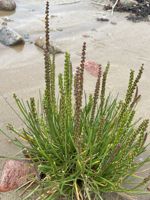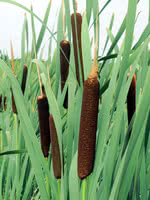Mon-Fri 9am - 5pm Mountain time
Common Cattail vs Seaside Arrowgrass
Triglochin maritima
Typha latifolia
CUSTOM GROW
CUSTOM GROW
Seaside Arrowgrass is a native perennial commonly found in wetlands, salt marshes, and moist meadows. It is especially suitable for difficult growing sites. Its dense root system helps stabilize soil, while also providing food, cover, and habitat for small animals within the wetland community.
Seaside Arrowgrass is suitable for shoreline stabilization, wetland restoration, and naturalization projects.
Cattail is found all across North America, growing next to water. Like other waterside plants, Cattail provides erosion control and forage for animals.
It is suitable for land reclamation. Cattail is able to tolerate cold weather and occasional flooding.
Seaside Arrowgrass Quick Facts
Common Cattail Quick Facts
Toxicity: can be toxic to humans and livestock

